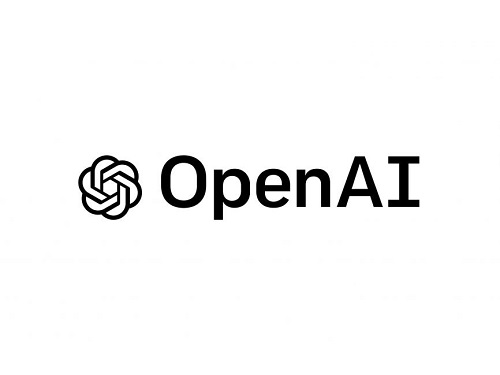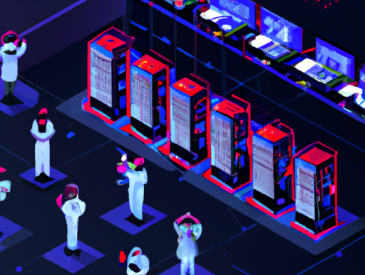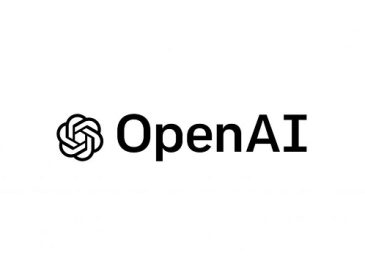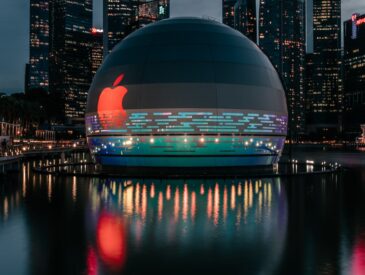The recent introduction of GPT-4 Turbo with Vision by OpenAI signifies a pivotal advancement in the field of artificial intelligence, blurring the lines between visual and textual understanding. This integration not only promises to enhance the versatility and efficiency of AI-driven applications but also sets a new benchmark for multimodal AI capabilities. As we stand on the cusp of witnessing the profound implications of this technology on various industries, one must ponder the innovative applications and transformative solutions that will emerge. The question remains: how will this fusion of vision and text processing redefine our interaction with AI systems?
Key Takeaways
- GPT-4 Turbo with Vision combines text and image processing for advanced AI capabilities.
- Enables the creation of innovative multimodal applications, enhancing user experience.
- Simplifies the development process with integrated vision and text understanding.
- Opens new possibilities in sectors like AI software engineering and health applications.
- Represents a significant leap in AI technology by blending NLP with visual comprehension.
GPT-4 Turbo With Vision Overview
The introduction of GPT-4 Turbo with Vision by OpenAI marks a significant advancement in the field of artificial intelligence. It blends text and image processing capabilities to empower developers with a more versatile and efficient tool for creating multimodal AI applications.
This innovative model is designed to streamline the development process by integrating text and image understanding in a single framework, eliminating the need for separate models to process different types of data. Available through the OpenAI API, GPT-4 Turbo with Vision simplifies the creation of AI applications that can interact with both textual and visual information.
This advancement opens up new possibilities in the development of more intuitive and interactive AI systems, making AI technologies more accessible and effective for a broader range of applications.
GPT-4 Turbo with Vision is now generally available in the API. Vision requests can now also use JSON mode and function calling.https://t.co/cbvJjij3uL
Below are some great ways developers are building with vision. Drop yours in a reply ????
— OpenAI Developers (@OpenAIDevs) April 9, 2024
Key Features Unveiled
Building on the overview of GPT-4 Turbo with Vision, it is essential to explore the distinctive features that set this model apart in the domain of artificial intelligence.
The integration of vision capabilities allows the model to understand and process images alongside text, a significant leap from previous iterations that required separate models for text and image analysis. This advancement simplifies the development process by enabling a more streamlined approach to creating multimodal applications.
Moreover, the GPT-4 Turbo with Vision maintains a 128,000-token window and adheres to a knowledge cutoff from December 2023, ensuring its relevance and applicability in current contexts.
The model’s ability to combine text and image processing opens the door to a plethora of innovative use cases, marking a significant milestone in AI development.
Innovative Applications Explored
Exploring the domain of innovative applications, GPT-4 Turbo with Vision ushers in a transformative era for AI, enabling developers to create groundbreaking multimodal solutions. This integration of vision capabilities with advanced text understanding opens up unprecedented possibilities.
For instance, Devin, an AI software engineering assistant, now offers coding help by analyzing both code snippets and related diagrams. The Healthify app has revolutionized nutritional tracking by providing insights based on photographs of meals, making health monitoring more intuitive. Meanwhile, Make Real is pioneering web development by transforming user-drawn interfaces on whiteboards into functional websites.
These examples underscore the versatility and potential of GPT-4 Turbo with Vision across various sectors, from software development to health and web design, highlighting the model’s capability to simplify and enhance the creation of complex, multimodal AI applications.
ChatGPT Integration Prospects
After highlighting the innovative applications of GPT-4 Turbo with Vision, attention now turns to the prospects of integrating this advanced model into ChatGPT. This integration promises to redefine the boundaries of AI chatbot capabilities by combining the power of natural language processing with advanced visual comprehension.
The inclusion of GPT-4 Turbo with Vision into ChatGPT is expected to enable the platform to interpret and respond to queries that involve both text and images, greatly enhancing user interaction. For developers, this means the ability to create more intuitive and interactive applications, opening up new possibilities in sectors ranging from education to customer service.
The seamless integration of text and image processing capabilities stands to simplify development workflows, making it easier to implement sophisticated features while reducing the complexity and time required for development.
Developer Community Impact
The release of GPT-4 Turbo with Vision has generated significant enthusiasm among developers, heralding a new era of creativity and innovation in AI development. This groundbreaking multimodal model merges text and visual processing, allowing for a seamless integration that expands the possibilities of AI applications. Developers now have the tools to create more intuitive and interactive software, such as AI assistants that understand content in images or applications that can generate insights from visual data.
The developer community is particularly excited about the model’s potential to simplify and enhance the development process, making it easier to bring complex, innovative ideas to life. OpenAI’s commitment to advancing AI technology is evident in the release of GPT-4 Turbo with Vision, sparking a wave of creativity and innovation within the developer ecosystem.
Frequently Asked Questions
How Does GPT-4 Turbo With Vision Handle Privacy Concerns?
GPT-4 Turbo with Vision addresses privacy concerns by following stringent data handling and processing protocols. OpenAI guarantees compliance with privacy laws, implementing robust security measures to protect user data and images processed by the model.
Can GPT-4 Turbo With Vision Identify Objects in Real-Time?
The GPT-4 Turbo with Vision model is designed to process and understand images, allowing it to identify objects in real-time. This capability enhances AI applications by integrating visual understanding with textual analysis.
What Are the Model’s Limitations in Image Processing?
The GPT-4 Turbo with Vision model, while advanced in integrating text and image processing, may have limitations in real-time object identification, accuracy in complex image interpretations, and handling of highly nuanced visual data.
How Is the Model’s Performance Measured or Evaluated?
The model’s performance is evaluated through accuracy in understanding and integrating text and images, efficiency in processing, and the breadth of applications it can support, from coding assistance to generating websites from drawings.
Are There Any Cost Differences Using GPT-4 Turbo With Vision API?
Regarding the cost differences for utilizing the GPT-4 Turbo with Vision API, detailed pricing information has not been explicitly provided. However, integrating vision capabilities likely involves additional costs due to the enhanced functionality offered by the model.
Source: https://platform.openai.com/docs/models/gpt-4-turbo-and-gpt-4
Get ready to dive into a world of AI news, reviews, and tips at Wicked Sciences! If you’ve been searching the internet for the latest insights on artificial intelligence, look no further. We understand that staying up to date with the ever-evolving field of AI can be a challenge, but Wicked Science is here to make it easier. Our website is packed with captivating articles and informative content that will keep you informed about the latest trends, breakthroughs, and applications in the world of AI. Whether you’re a seasoned AI enthusiast or just starting your journey, Wicked Science is your go-to destination for all things AI. Discover more by visiting our website today and unlock a world of fascinating AI knowledge.





